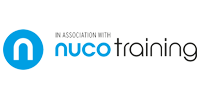This basic Health and Safety Training programme covers the key areas of Health and Safety that you are legally required to train your staff in. It provides an easy-to-follow but comprehensive introduction to the major topics that will keep your workplace safe. Over 30 million working days are lost due to work-related illness and workplace injury each year
This training course is broken down into 10 sections
This section looks at who is responsible for health and safety at work. It ensures that everyone is aware that they share the responsibility – they have a duty to themselves, to their colleagues and to their workplace. It highlights the importance of training and communication.
A hazard is something with the potential to cause harm and a risk is the likelihood of that harm happening. Here we look at what those risks might be in the workplace, we look at risk assessments and safe working. The section is split into subsections, each covering one or more different areas of risk.
In this section we look at the different types of safety signboards – prohibition signs, warning signs, mandatory signs, safe conditions signs and fire safety signs. We look at fire action signs and we also include COSHH safety signs (which use the CLP pictograms from the GHS system of Classification and labelling of chemicals).
Here we look at what to do if things go wrong. We cover Workplace First Aid Kits and Accident Books for accident and injury reporting, we cover a worst case scenario, looking at calling the emergency services.
This section of the course covers your back – what it’s made up of, how it works, how flexible and strong it is, but also how fragile it can be if it’s not looked after. It explains what damage can be done with poor lifting techniques, and it offers an interesting insight into why children naturally lift objects correctly.
The second section of our Manual Handling Training explains how you can prevent aches, pains and more serious damage by maintaining a healthy back on a daily basis. It covers correct (neutral) postures, working in the Power Zone, and how to successfully break bad postural habits.
Before you begin any Manual Handling task, you need to complete a ‘TILE’ assessment to reduce the risk of injury. This section takes you through the four different stages (Task Individual Load Environment) and provides you with additional advice about what to do during these tasks.
Falls from height are still the leading cause of death in UK workplaces Working at Height is not JUST limited to being somewhere high above ground level. The HSE defines working at height as being anywhere which “if there were no precautions in place, a person could fall a distance liable to cause personal injury”. In this section, we’ll look at what legal responsibilities you and your employer have with regards to safety when working at height.
Whether you’re working up a skyscraper or you’re on the back of a lorry unloading a delivery, working at height always comes with risks. When most people think of working at height, they tend to imagine being really high up – on the roof of a building, for example – but actually, most accidents from height occur no more than two metres from the ground. In this section we’ll look at ways of reducing the risks of working at any height, what safety precautions should be taken, and why risk assessments are so important.
When it comes to choosing the right equipment for working at height, there are many things you need to consider. You need to think about the equipment’s suitability for the job and the stability of the surrounding area; you need to think about the length of time you’ll be using the equipment and lots more. This final section of the course will cover everything you need to think about before choosing equipment to use for work at height, you’ll also see some useful tips on how to stay safe when using it.
Everyone in your workplace is legally required to have Health and Safety Training, and this course provides the perfect introduction to Health and Safety – whether as an induction tool, refresher, or for people changing roles within your organisation.
This Health and Safety Training gives a good grounding in general Health and Safety at work, helping employees recognise and avoid risks at work and explaining what to do to minimise illness and reduce workplace accidents.
It looks at responsibilities and legal requirements, hazards and risk, safety signs at work, personal protective equipment and workplace emergency procedures such as fire evacuation and calling the emergency services. Health and Safety Essentials briefly covers: fire awareness; slips, trips and falls; manual handling; basic DSE; basic COSHH; and electrical safety.
Incorrect Manual Handling is responsible for more than a third of all workplace injuries that are reported to authorities each year.
If manual handling is not carried out properly it can have significant consequences on your health (musculoskeletal disorders), particularly if you carry out manual handling operations regularly.
Maintaining a healthy back is also vital in enabling you to meet the demands of your everyday responsibilities – at work, at home, and during your leisure time. This training equips you with all the tools you need to protect your back whilst conducting a wide variety of Manual Handling tasks.
In the UK, falls from height account for over a quarter of all workplace fatalities, making it the leading cause of death at work. Add to this 43,000 non-fatal accidental injuries and you begin to get an idea of just how dangerous working at height can be.
However, despite being both common and dangerous, falls from height are also completely avoidable. All it takes is a little extra care, planning, and attention to detail and falls from height can be almost entirely prevented; whilst the effects of those that do still occur can be dramatically reduced.
At its core, this Working at Height Training programme takes the requirements of the Working at Height Regulations 2005 and the best-practice suggestions of the accompanying HSE guidance document and creates a course which is simple and concise yet comprehensive, ensuring that everyone understands their responsibilities and how to stay safe.
The course breaks the topic of working at height down into three easy-to-follow sections; the legal responsibilities of both employers and employees; the dangers associated with work at height and how to stay safe; and an in-depth look at the kinds of equipment which might be used, their benefits, and the risks they pose.
RDC Safety Limited have a strong team of specialist trainers who develop and deliver bespoke courses tailored to suit your business’s individual requirements. From personal consulting, to providing training courses, and bespoke policies and procedures, RDC Safety Limited invests the time to understand your business.





We‘d love to discuss your requirement further so please do get in touch by emailing info@rdcsafetylimited.co.uk or
calling 07971 202356. Alternatively, you can reach us by filling in our contact form.